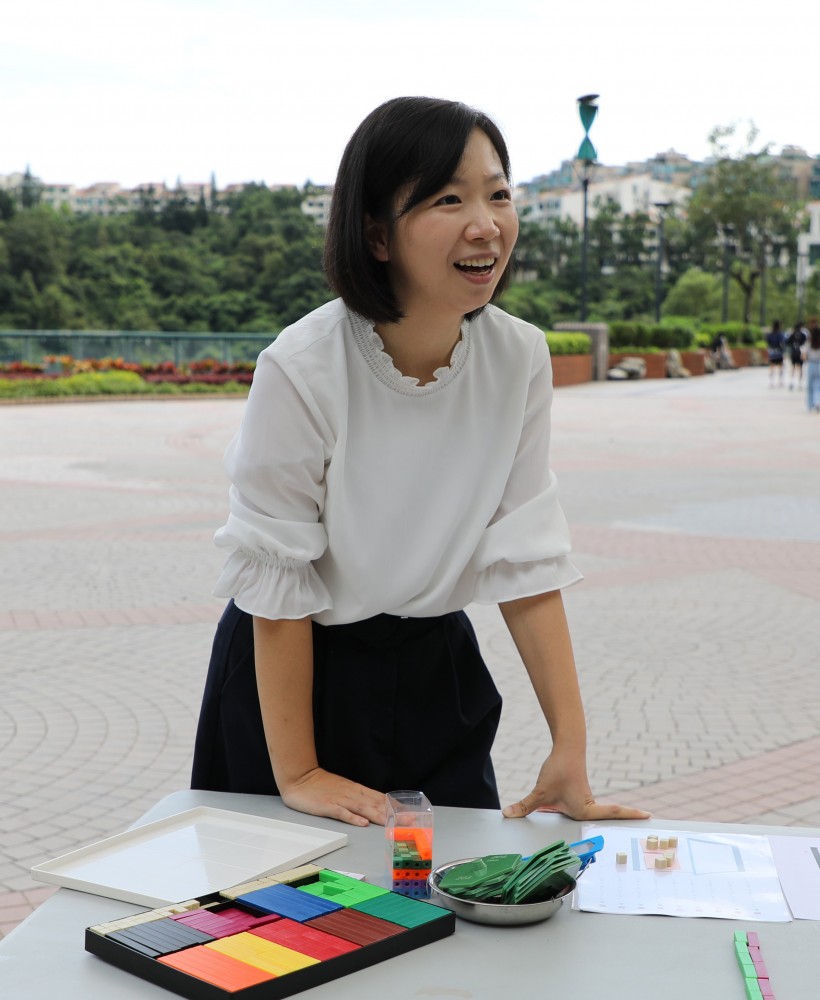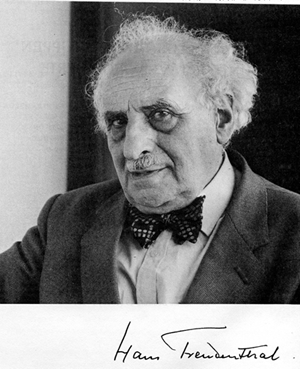From cubes to concepts: a fun journey through mathematics

I have dreamed of becoming a mathematics teacher ever since I was a secondary school student. That dream motivated me to apply for a Bachelor of Education degree programme in primary mathematics at the Department of Mathematics and Information Technology (MIT) when I was nearing the end of my secondary school studies in Shanghai around 2007. At MIT, I encountered the fascinating notion of “Teaching for Mathematising” for the first time. In simple terms, it is a pedagogical approach that emphasises the discovery and construction of mathematical concepts by learners, rather than simply presenting them as finished products.
In order to deepen my understanding of “Teaching for Mathematising”, I decided to explore this idea in my final-year project for my undergraduate studies at MIT. Knowing that Dr Fung Chun-ip from the department was a renowned expert in this field, I approached him for guidance on my project proposal. Although Dr Fung was not my project supervisor, he graciously took the time to teach me the fundamentals of mathematics teaching and introduced various designs that emphasised the process of mathematising. In return, I needed to travel to a primary school in Zhuhai every two weeks on his behalf to share my newly acquired knowledge of “Teaching for Mathematising” with the teachers there.
After graduating from EdUHK, I was fortunate enough to secure a teaching position at a primary school in Hong Kong. Furthermore, I had the opportunity to teach all six forms of primary school mathematics within a short three-year span under a special arrangement by the school. The experience of teaching the entire primary school mathematics syllabus has proven to be a valuable asset during various stages of my research and academic career.
In my third year teaching at the primary school, Dr Fung sought a research assistant with frontline teaching experience to assist him in a new project focused on developing instructional designs and resources for students with special educational needs (SEN). Since I had already taught mathematics for three years and had experience with SEN students at my primary school, Dr Fung considered me a suitable candidate and asked if I was interested in joining his new research project.
My aspiration to gain deeper insights into mathematics education prompted me to accept Dr Fung’s offer, even though it meant giving up a secure job. To closely observe how SEN students learn, we partnered with a primary school that grouped around ten slow-learning students together in one class and assigned a teacher to instruct them. As a research assistant, I spent two years observing how these students learnt mathematics. I tracked their learning progress and assisted the teacher in modifying the curriculum and enhancing the teaching materials to better suit their needs. Most importantly, I observed in great detail why some students struggled to learn, and how different pedagogies and materials affected their learning outcomes.
After concluding our project with SEN students, Dr Fung and I had opportunities to expand our research with special schools. In my role as a project consultant, I worked alongside teaching staff at these special schools to develop learning materials for students with intellectual disabilities. During these years, I also had opportunities to work on projects involving ethnic minority students whose native language is different from the official language of instruction in schools. These students faced similar learning challenges as those with speech and language impairment.

Through these observations, I found I align profoundly with the renowned Dutch mathematician and educator Hans Freudental in educational philosophy. We both attach great importance to understanding the “why” behind students’ learning challenges.
He wrote:
Medical diagnosis in former times aimed at stating what is wrong, as do the so-called diagnostic tests in education. True diagnosis tells you why something went wrong. The only way to know this is by observing the child’s failure and trying to understand it. An expensive way. (p.135) (Freudenthal, H. (1981). Major Problems of Mathematics Education. Educational Studies in Mathematics, 12(2), 133-150.)
I would like to cite one example to illustrate this point.
I often use small unit-sized cubes to teach students how to calculate the volume of a three-dimensional structure. Small cubes are placed side by side to form a rectangular prism, with A cubes along the length and B cubes along the width. The area of its rectangular base is then A × B. When only one layer of cubes is present, the volume is A × B × 1. As a second layer of cubes is added, the volume is then A × B × 2, and this pattern continues with each additional layer. Ultimately, if C layers are stacked, the formula could be generalised to A × B × C, illustrating that the volume of a three-dimensional structure equals its width × length × height.
During a lesson, I noticed an ethnic minority student was puzzled by this formula. When I sought to understand her difficulty with the concept, she expressed uncertainty about whether each layer contained the same number of cubes. To help her, I encouraged her to stack and count the cubes in each layer herself. As she did this, she found that each layer indeed had the same number of cubes. Gradually, she learnt that the volume of a rectangular structure is calculated by multiplying its width, length, and height.
We, teachers, need to recognise that what we take for granted as a fact might not be obvious to our students.
Teaching and learning have a reciprocal relationship. I gained my lesson from this experience too. We, teachers, need to recognise that what we take for granted as a fact might not be obvious to our students. We must set aside our assumptions and be sensitive in identifying their obstacles in learning. This experience reinforced the value of Freudenthal’s approach: by observing students’ struggles and actively seeking to understand their difficulties, we can adapt our teaching methods to cater to all students in mathematics teaching.
As a teacher, I have often been inspired and encouraged by my students. I recall one project where I assisted a teacher in teaching a student with moderate intellectual disabilities how to count numbers. Since the student could barely make distinct sounds for different numbers, it posed a challenge for us to evaluate the student’s learning progress as well as the effectiveness of our approaches. One and half years after the launch of the project, his teacher sent me a video one day in which the student was making distinguishable sounds while counting! I could feel how overjoyed his teacher was when sharing his student’s achievement with me. Witnessing the student’s perseverance was profoundly moving; his progress was a testament to the power of patience and tailored instruction.
This experience resonates with Hans Freudenthal’s reflection on education:
“A good stomach swallows everything; whether our food is good or not is something that a sensitive stomach is better equipped to tell us… the reaction of the mentally retarded child will certainly remain an excellent criterion.” (p.72) (La Bastide-van Gemert, S. (2015). All positive action starts with criticism: Hans Freudenthal and the didactics of mathematics. Springer.)
Mathematics education is about teaching students rather than merely teaching mathematics.
Freudenthal’s words remind us that the responses of our students – particularly those facing challenges – serve as invaluable indicators of our effectiveness as educators. Two years ago, I completed my doctoral degree at MIT and later became part of its teaching staff. Since then, I have shouldered greater responsibility in carrying forward the baton passed on from many generations of mathematics educators. I remember Dr Fung once told me that mathematics education is about teaching students rather than merely teaching mathematics (originating from Professor Siu Man-keung, the teacher of Dr Fung Chun-ip). For an educator whose primary objective is to pass on knowledge, mathematics may seem central to learning; however, for Professor Siu and Dr Fung, students are at the heart of the entire educational process.
Instead of blaming students for failing to learn, I ask myself whether and how I can sufficiently understand their difficulties in order to identify the best methods for nurturing them. Looking back on my educational journey, I acknowledge that my experiences have been influenced by the opportunities and support given to me by my teachers. The wisdom imparted by many devoted mathematics educators like Dr Fung and advice from my colleagues has shaped me into the educator I am today. I am thankful for having joined MIT first as an undergraduate student and later as a researcher, PhD student, and now as a teacher. I am even more grateful for all my students; every small step they take in learning mathematics serves as significant encouragement to me.
Note: Holding a PhD in Mathematics Education, Dr Wang Dichen is an expert in interdisciplinary studies in elementary mathematics education and special education. With her extensive frontline teaching experience, Dr Wang has contributed her expertise to the development of school-based mathematics curricula and has been instrumental in professional teacher development projects for local mainstream and special schools.
Dr Wang's primary research interest lies in the development of effective instructional designs for mathematics learning, particularly for students with special educational needs. As an active member of a local professional teacher community known as “Teaching for Mathematising”, Dr Wang collaborates with teachers and educators to exchange insights and best practices in mathematics teaching.
(Dr Daisy Wang Dichen collaborated with Tam Siu-man on this piece.)






